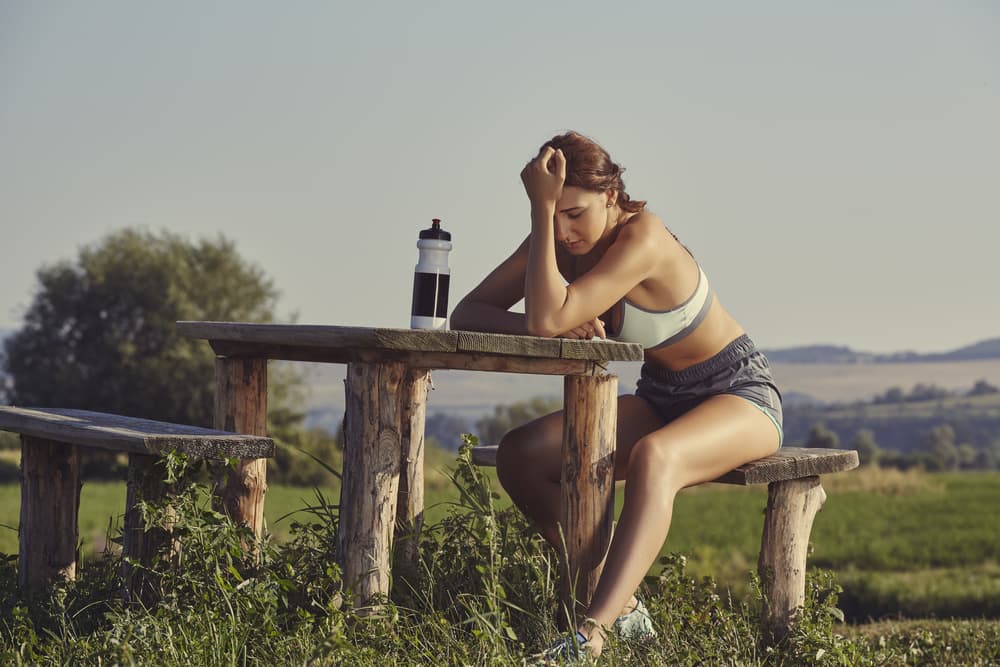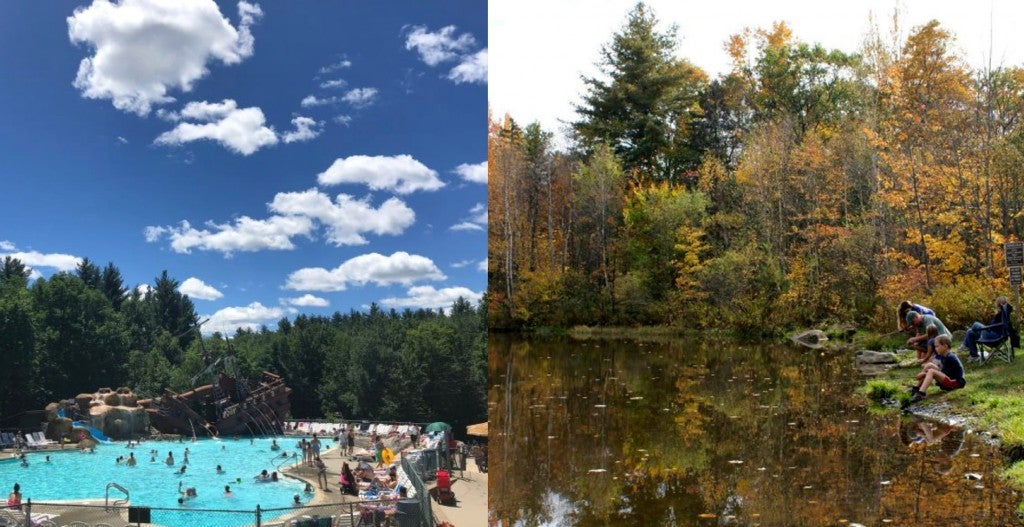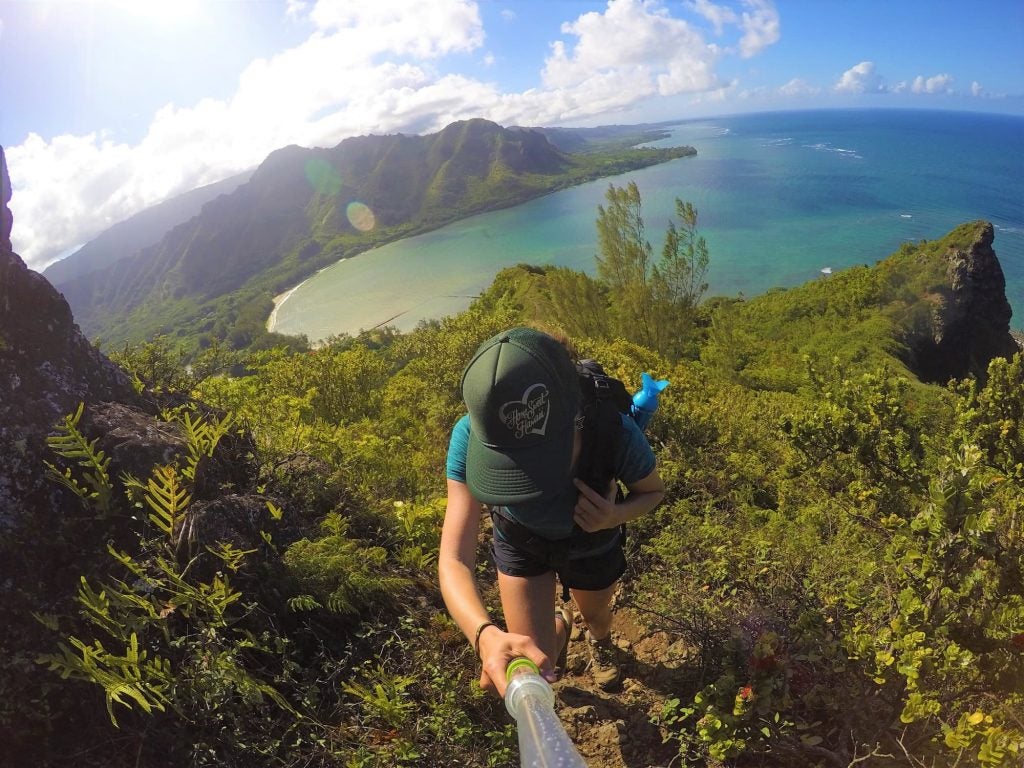This article about how to tell if you’re dehydrated and the benefits of hydration is brought to you by our friends at Liquid IV, whose electrolyte powder is the perfect way to stay hydrated on your next adventure.
The symptoms of dehydration can manifest anywhere, whether on a trek to the alpine or a hot afternoon run. Temperature and season aside, it’s important to know how to recognize the signs of dehydration, any time they might arise, and how you can prevent the more serious side effects.
How To Tell If You’re Dehydrated: A Quick Science Lesson

Being thirsty is not always the first sign of dehydration. Oddly enough, dehydration often means that your body is not only short on water, but that its salt levels (also known as electrolytes) are down as well, which causes your cells to dry out. This type of dehydration, called extracellular dehydration, often causes a mild craving for salt prior to feeling thirsty, since one of your body’s first reactions to being in need of fluids is to restore its balance of electrolytes.
In the other type of dehydration, called “pure water” or intercellular dehydration, the body loses water in greater quantities than it loses salt, and thus produces the sensation of thirst prior to most other symptoms.
With either type of dehydration, regardless of whether you feel thirsty, it’s important to catch symptoms that might arise while out on the trail or racing down the ski hill. Though each type differs in terms of its initial effects, paying attention to the signs of dehydration in yourself and those you’re traveling with could help to prevent an outdoor medical emergency. To help with self-recognition of symptoms, we’ve created a quick guide for identifying the moderate to serious signs of dehydration, as well as some steps to take to make sure you get the proper treatment as soon as possible.
How To Tell If You’re Dehydrated: Outward Signs and Symptoms

The earliest symptoms of dehydration include regular experiences related to exercise (sweating, minor fatigue), and are easily solved by drinking water. Moderate and severe dehydration are the stages to worry about, particularly because moderate symptoms are often a gateway to severe dehydration, which can require medical intervention to fully recover from.
Moderate Symptoms:
- Muscle fatigue/weakness accompanied by light cramping
- Low levels of salivation
- Sensation of intense thirst
- Loss of appetite
- Headache
- Dry skin
- Dark yellow urine
- Dizziness
How to tell if you’re dehydrated with moderate symptoms:
- Are You Hungry?: Taking stock of your appetite is a great way to tell if you might be entering the more moderate stages of dehydration. If you’ve been on the trail for several hours, your body should be craving nutrients of some kind, but if you suddenly find that nothing in your pack sounds good, it’s generally an accurate indicator that your body is in need of fluids and nutrients to be fully restored.
- Track Your Urination: It’s worth it at the “moderate” stage to start tracking your urination patterns and color, including how many times you can recall going in the last 8-12 hours, and how many times since starting your trip. If it adds up to less than 6-7 times in the last 24 hours (especially if it’s lower than 4-5), you’re likely dehydrated. In addition, if your urine is dark yellow or nearing a brownish color, it’s definitely time to replenish on fluids.
- Try to Spit: If you have trouble conjuring the saliva necessary to spit once or twice, you should start drinking water or another beverage in small sips.
If moderate symptoms are left unaddressed, severe dehydration can begin to set in. The worst stages of dehydration are most commonly seen on multi-day trips or during extreme athletic challenges like ultramarathons where hydration is either unavailable, or the body is unable to adequately rest and recover for several hours, particularly in hot weather.
If you or someone you know experiences these symptoms, it’s best to act immediately by seeking medical help along with replenishing fluids as quickly as possible through oral rehydration solutions like electrolyte powder or other hydration products.
Severe Dehydration Symptoms:
- Exhaustion
- Extremely low to no perspiration
- Rapid heartbeat
- Trouble breathing
- Confusion
- Dizziness
- Fever or chills
- No urination or very dark in color
- Dry skin (particularly dry skin that seems to “stick together” when pinched)
How to tell if you’re dehydrated with severe symptom recognition:
- Check your temperature: If you’re suddenly feverish or experiencing flu-like symptoms (severe fatigue, chills) you may be severely dehydrated. Stop any strenuous activities if possible, and rest/rehydrate. It’s best to not engage in strenuous physical activity for several hours, to give your body time to recover.
- Keep track of your thoughts: If you’re severely dehydrated, your thoughts might become mixed up or disoriented. If you catch your mind wandering or feel confused, take stock immediately of your surroundings. If you’re traveling with others, let them know you may be experiencing symptoms of dehydration. Like most other symptoms of dehydration, the best cure is always rest and a replenishing of fluids.
- Pinch the back of your hand: A final way to measure the more severe symptoms of dehydration is to pinch the back of your hand or arm, and watch how quickly your skin moves back into place. When moisture leaves the body, it dries the skin out first, removing the elasticity that’s normally present.
Though some of these symptoms can be difficult to diagnose, replenishing your fluid intake via water, some light fruit juice, or an electrolyte powder is critical in order to prevent yourself from reaching the severe stages. As with several other outdoor ailments, staying disciplined about the amount of electrolytes and water you’re consuming is the best way to prevent becoming dehydrated in the first place, as well as taking frequent small breaks, particularly in hot weather.
If you’re headed out on the trail soon, be sure to overpack on the liquids and don’t forget to throw in a couple of packets of Liquid IV’s oral rehydration solution, even if you don’t think you’ll use it. It may end up being just what you need to stay fully hydrated on your next outdoor adventure.
The Dyrt is the only camping app with all of the public and private campgrounds, RV parks, and free camping locations in the United States. Download now for iOS and Android.Popular Articles:
Articles on The Dyrt Magazine may contain links to affiliate websites. The Dyrt receives an affiliate commission for any purchases made by using such links at no additional cost to you the consumer.



